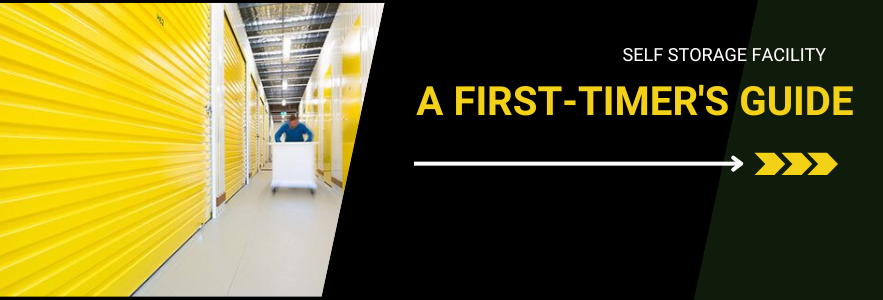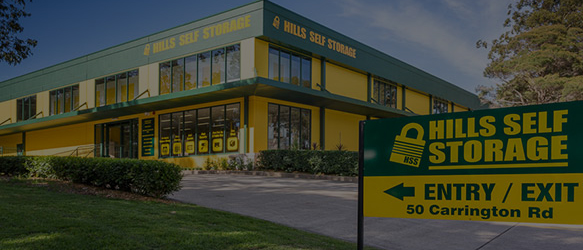
When selecting self-storage, making the right choice is crucial, especially if you’re new to the process. Many first-time users may think – Which storage facility is best for me?
Understanding the process and considering various factors is essential for a successful self-storage journey. This guide will provide valuable insights and tips for first-time self-storage users.
Selecting the Ideal Storage Facility
Before diving into self-storage, finding a facility that offers security and convenience is vital. Hills Self Storage has state-of-the-art self-storage facilities in Sydney located in Castle Hill, Galston, and Rouse Hill, respectively, offering a wide range of storage options. If you’re preparing to use a self-storage facility for the first time, this helpful guide will provide essential tips and considerations to make your experience positive.
Preparing for Self-Storage
Determine Your Moving Date: Knowing your move-out date is essential for efficiently organising storage arrangements and booking removalists.
Measure Your Items: Understand storage unit sizes, whether square or cubic meters, to select the right fit for your belongings. Use a tape measure during the planning phase.
Create an Inventory: Walk through your home and list items you plan to store. This inventory helps with organisation and tracking.
List Questions: Compile a list of questions to ask the storage facility staff to ensure you have all the necessary information.
Plan Your Storage: Consider which items can be stacked and which should not be stored, and note the dimensions of large items.
Consider Location: Choose a storage facility close to your new location to minimise commute time.
Researching the Storage Facility
Check Reviews and Ratings: Check online reviews and ratings to ascertain the quality of service provided by the storage facility.
Visit the Facility: A physical visit provides a better understanding of the facility’s layout and helps with planning.
Uncover Storage Sizes: Determine what storage sizes are available on the facility’s website and through an on-site visit. Ask staff to show you the actual storage sizes.
Reservation Details: Inquire about how long you can reserve a storage unit and if there’s a deposit requirement.
Understand Contracts: Determine whether the storage agreement is a locked-in or non-locked-in contract. This information is crucial for planning your vacate date.
Insurance Coverage: Review the insurance coverage details for your stored items and ensure you understand the terms in the Product Disclosure Statement.
Features and Services of Self-Storage Facility
Access Hours: Check the facility’s access hours to ensure they align with your needs.
Equipment Availability: Find out if the storage facility provides free trolleys, pallet jacks, or forklifts for on-site use.
Additional Facilities: Consider whether the facility offers extra services such as conference rooms and restroom facilities.
Packing Materials: Check for on-site packing materials, including sturdy boxes, for stacking and protecting your items.
Cleanliness and Pest Control: Ensure the facility and storage units are clean and pest-controlled.
Security Measures: Inquire about security features such as surveillance cameras, padlock checks, and pin access to the self-storage facility.
Rubbish Disposal: Check for the availability of commercial bins for disposal on-site.
Notice to Vacate: Understand the notice period required for vacating the storage unit and any associated fees for early exits.
Fee Structure: Clarify the fee structure, including early exit, reservation, cleaning, and other charges.
Unused Rent and Insurance: Inquire about the refund policy for unused rent and insurance fees.
Parking Space: Confirm if the facility provides ample parking space, especially if you have a large truck or container.
Lighting: Check the lighting in the storage facility, ensuring each unit has sufficient illumination.
Individual Alarms: Find out if storage units are individually alarmed for added security.
Lift Access: Ensure the goods-lift can accommodate your most oversized items.
Door Size: Verify whether your most oversized items fit through the storage unit’s door. If not, inquire about units with roller doors or double doors.
Less Busy Hours: Ask the self-storage facility staff about the least congested times to avoid parking hassles.
Recommended Removalist: Seek recommendations for removalists from the storage facility, which can save you time and effort.
Shelving Options: Check if the facility offers shelving for rent or purchase to help organise your items efficiently.
Moving Transport: Enquire if the self-storage facility provides free move-in truck hire for moving your items.
Final Words
Entering the realm of self-storage as a first-time user can be made hassle-free and seamless with proper preparation. By understanding your storage needs, researching for self-storage facilities, choosing the right self-storage unit size, packing efficiently, considering security measures, and documenting your items, you’ll be better prepared to make the most of your self-storage journey. Don’t hesitate to ask questions, seek guidance from self-storage professionals, and enjoy the benefits of convenient storage.
Contact Hills Self Storage
Are you looking for a reliable and convenient storage solution in Sydney? Hills Self Storage facilities are conveniently located in Castle Hill, Galston, and Rouse Hill and offer a wide range of storage options, top-notch security features, packing supplies and services, flexible rental terms, and excellent customer service. Hills Self Storage in Sydney is your trusted storage partner. Visit the Hills Self Storage website or contact us at 02 8850 0770 to rent a self-storage unit today.



 02 8850 0770
02 8850 0770









